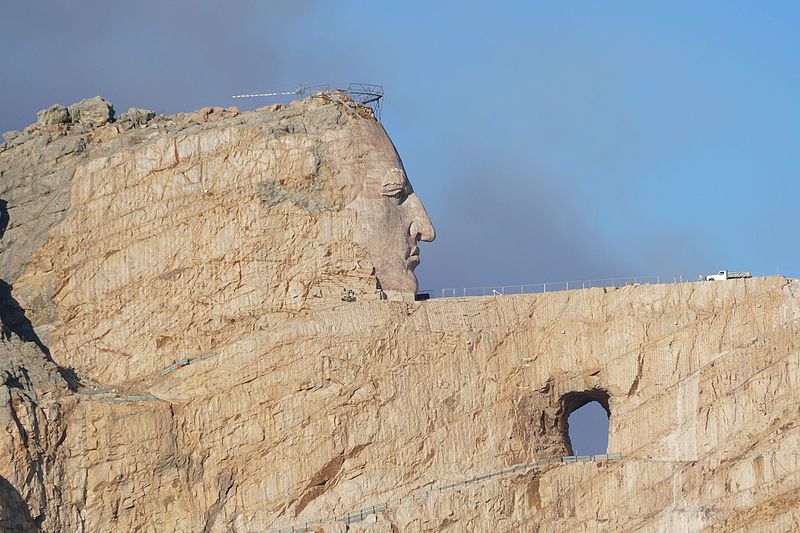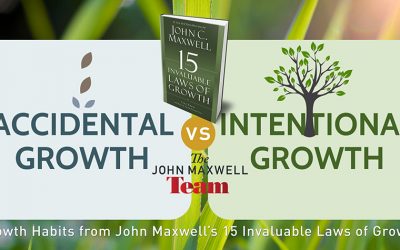“Vision” is one of those business words that used to have a lot more meaning than it does today. Overuse and misapplication have nearly reduced “vision” from a transformational foundation into a buzzword without any real power. This need not be the case, either for you or for the team you lead.
Every leader may choose to tap into the power of vision. However, they will not reach their full potential unless they embrace one fundamental aspect of vision that is, often, missed:
Visionary leaders build something they will never see completed.
A company may begin with a simple idea to market a single product or service, yet, if the leadership chooses to stick just to that, it is unlikely this enterprise will thrive from one generation to the next.
When city planners begin the slow, tedious task of developing a long-term growth plan, many do so with the clear understanding they will be out of office, or perhaps long dead, before their work is ever brought to fruition. Yet, if these talented, innovative and hardworking people refuse to walk behind the proverbial plow and till the land, that work would never begin. Many cities across the world have suffered because their leaders lacked this vision. The evidence is clear: sprawl, blight, lack of water, resources and funding for services.
The evidence of good long-term planning is also clear. Thriving communities, well-tended green spaces, cultivated infrastructure … and a new generation of planners committed to moving the work forward.
Crazy Horse: One family’s generational vision
There is another project in the works in the American West that also embodies these principles. In South Dakota, about 15 miles southwest of the famous monument carved into Mount Rushmore, is an even more imposing work in progress. The massive memorial to Native American leader Crazy Horse was begun in the 1940s by Korczak Ziolkowski, an accomplished sculptor who honed his craft working for Gutzon Borglum on Mount Rushmore. Hearing of Ziolkowsi’s prowess, Chief Standing Bear commissioned Ziolkowski to create a monument celebrating all of North America’s native tribes.
Ziolkowski embodied the adage “go big or go home,” designing a monument on such a massive scale that everyone involved knew they would never live to see it finished. This deterred none of them. They drew up plans, put together a team and started chipping away.
Decades passed. Eventually, so did Korczak. Today, the work continues through the Crazy Horse Memorial Foundation. Four of Ziolkowski’s children and 23 of his grandchildren remain actively involved in the work, a vision that continues to thrive.
When famous British TV host, Stephen Fry, asked one of Ziolkowski’s sons if he would ever see his project finished, he shook his head noncommittally. “I just work on it every day, so that, one day, it will be finished.” To this man, the project is more important than personal glory. Like his father, he knows he probably won’t live to see it completed. Yet he persists, because of all that is accomplished in the process: all the lives touched and interest in history sparked because of the work.
The story of the Ziolkowski family and the Crazy Horse Memorial encapsulates the three points of what John Maxwell calls the pyramid principle of visionary leadership.
3 points of successful long-term visions
POINT 1: Do something that isn’t for ourselves
Visionary leadership is not about us. It’s about others. When we set out to accomplish something for others, that vision is, by its very nature, inspiring and compelling to those who encounter it. People love finding ways to help other people, and when we create those opportunities as part of a larger vision, we inspire others to bring their time and talent alongside us to build an even greater vision.
POINT 2: Do something bigger than ourselves
As with the city planners and massive monument sculptors, projects that are built to last are often too big for one person to accomplish on their own. History may only name the leaders, yet every one of them had a team working with them every step of the way. Many of the best visions are those that scare us a little – or a lot – because we know we may not be able to achieve them on our own. These visions force us to reach out and lean in, to bring others on board to share the work and the glory … even if that ultimate success is not realized until much later.
POINT 3: Do something for the next generation
There’s been a lot of negative things written by my generation about the Millennial generation. A lot of the criticism is the same sort of thing our parents’ and grandparents’ generations said about us, and much of it is patently unfair and shortsighted. Most Millennials simply want to do and be something that matters. Their time, talents and energies are a huge and virtually untapped resource for anyone with a vision to serve, to help and to make the world a better place.
So, instead of complaining and stereotyping, where is our generation in working to develop visions that will benefit ourselves and generations to come? What could be accomplished if we chose to work together to do great things our children and grandchildren could enjoy?
How does your vision stand up to these points? Are you building something for others, something bigger than yourself, the next generation will enjoy? If so, what does it look like, and what has it taught you? Share your thoughts in the comments below.
*Crazy Horse image by Bernard Spragg. NZ from Christchurch, New Zealand [Public domain], via Wikimedia Commons
6 Questions to Help You Develop a Consistent Effective Personal Growth Plan
Here we are, already a month into 2019! Isn’t it amazing how fast the days go by? By now, if statistics prove out, most folks who made New Year’s Resolutions have already slipped up. They may feel discouraged and defeated… even more so than before they...
Debunking Myths About Millennials in the Workplace
If you have been a hiring manager or have been responsible for managing people for more than a decade, you may have noticed a difference in how your team members respond to traditionally accepted work rewards and incentives. Where pay, compensatory...
Maintaining Momentum After a Big Win
This past week we celebrated with about 100 other leaders at Live2Lead Pasco-Hernando 2018. All of us benefited from dynamic speakers with powerful messages, and we learned specific shifts to help each of us develop and reach our goals as leaders. There...
Winning interview questions for job applicants
In our last blog, we talked with ‘Jimmy,’ who shared an incredible onboarding experience with us. Jimmy had been let go without any warning when his previous employer closed up shop, leaving him desperate for new work and feeling very out of place. He...
The difference on day one
I invest a lot of my time working with leaders to develop teams. I love that aspect of what I do. Working with people, sharing time and having conversations that make us all better is one of the most beautiful and rewarding opportunities I have. I get to...
What transformational leaders say
In our last blog, we talked about how what transformational leaders see gives them a vision that creates real change, in people and in industries. In this article, we’re going to take a deeper look at how those leaders communicate their vision in a way...








0 Comments